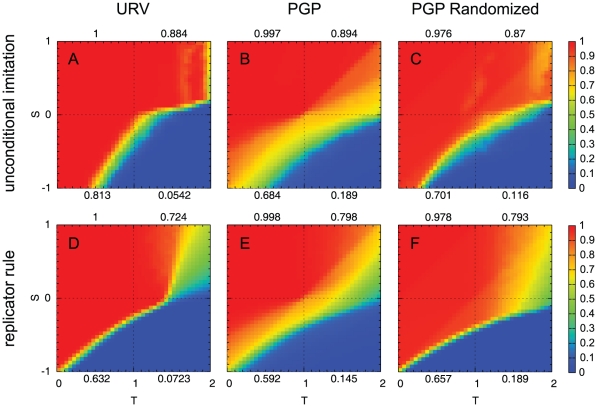Figure 1. Cooperation maps for different values of S and T show coordination failures on the PGP network.
Asymptotic density of cooperators for  social dilemmas on the URV (left), PGP (middle) and degree-preserving randomized PGP networks (right). Top row: Unconditional imitation rule; bottom row: replicator rule. In the upper left quadrant of each panel we have the Harmony game (0<S, T<1), in the upper right quadrant the Snowdrift game (0<S<1<T<2), in the bottom left the Stag Hunt game (−1<S<0<T<1), and in the bottom right the Prisoner Dilemma (−1<S<0, 1<T<2). Numbers above and below each quadrant represent the average value of the cooperation level in the quadrant. Note the anomalous smooth transition in the PGP network (middle column), which indicates the existence of coordination failures. For comparison, the URV network shows a very small region where coordination is not achieved, comparable to the results of model networks. The randomized version (not shown) gives essentially the same results as the original network, indicating the absence of peculiar features in its topology.
social dilemmas on the URV (left), PGP (middle) and degree-preserving randomized PGP networks (right). Top row: Unconditional imitation rule; bottom row: replicator rule. In the upper left quadrant of each panel we have the Harmony game (0<S, T<1), in the upper right quadrant the Snowdrift game (0<S<1<T<2), in the bottom left the Stag Hunt game (−1<S<0<T<1), and in the bottom right the Prisoner Dilemma (−1<S<0, 1<T<2). Numbers above and below each quadrant represent the average value of the cooperation level in the quadrant. Note the anomalous smooth transition in the PGP network (middle column), which indicates the existence of coordination failures. For comparison, the URV network shows a very small region where coordination is not achieved, comparable to the results of model networks. The randomized version (not shown) gives essentially the same results as the original network, indicating the absence of peculiar features in its topology.

